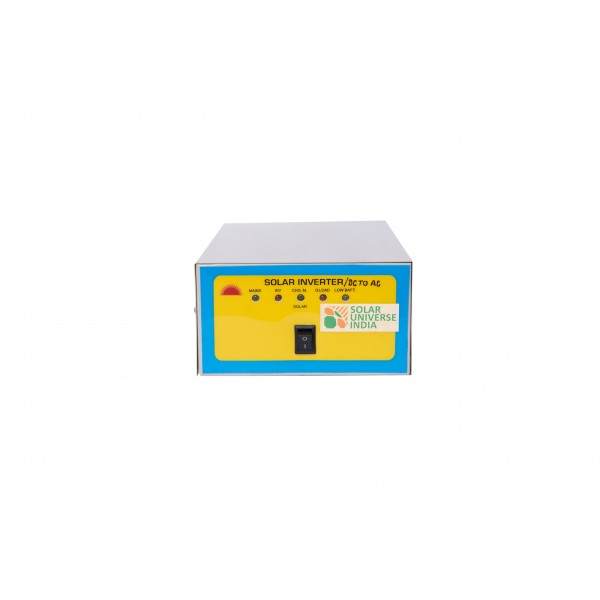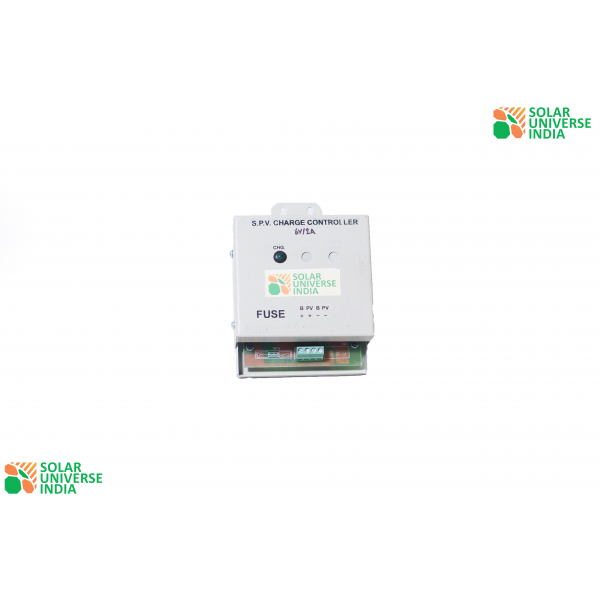Hello, Guest
Choose from a wide range of Solar Charge Controllers online at SolarClue
We at solarclue.com provide you with a wide range of solar charge controllers, which are good things for your house and the environment. Solar charge controllers are in huge demand in the market, and therefore, SolarClue has stepped forward in the market to cater to the requirements of yours and brings to you the best in class solar charge controllers online for you at industry-leading prices. There are several brands that you can choose at our online platform (solarclue.com) – a B2B, B2C, and B2G portal, dedicated to dealing with solar products.
What is a solar
charge controller? It is a device that manages the power going into the
batteries from the solar panels and ensures that the power doesn’t go back to
the solar panels, draining the batteries apart from protecting the batteries
from overcharging. Such devices come in a variety of shapes, sizes, and price
ranges and are available in two different technologies, PWM and MPPT. With our
non-renewable resources getting down day by day and keeping that in mind, a
solar charge controller is made as an excellent home improvement tool to
effectively use alternate energy sources in every household.
What is solar panel and how it works?
Solar Panel Price in India
Working Principle of Solar Panels
Types of Solar Panels
Difference between Monocrystalline and Polycrystalline Solar Panel
A solar battery is simply a
battery charged and stored with solar power or energy and discharges power or
solar electricity when needed. Solar batteries are rechargeable and used in
off-grid PV systems to store excess electricity for future use. Some categories
of solar battery banks use wet cells, whereas others use sealed or gel cell
batteries and both the categories of batteries have their different
requirements in terms of temperature, mounting, and ventilation.
Solar batteries are C10 rating
deep cycle batteries designed to connect with the best solar charge
controllers, inverters for providing power backup at night. Solar batteries are
designed in such a way to charge with the help of solar panels by collecting
sunlight in the day time. The solar battery and charger operate with its only
component like lead, which requires water top-up maintenance in 3-6 months.
SolarClue is the best platform
where people can buy their preferred solar batteries on varied brand names, be
it a Luminous or Okaya. The solar battery is a very good option for home.
Advantages of Solar Battery
·
Helps in reducing your electricity bills
permanently
·
Contributes to a sustainable future personally
·
Optimizes your self-consumption of your PV
system’s energy
·
Declares your independence from large energy
suppliers
·
Provides portable energy solution as it can use
anywhere
Types of Solar Batteries
There are different types of solar batteries available in the market. There is not much difference in batteries of varied types, except warranty and lifespan. Classification of the type of solar batteries are as follows:
·
Flat Plate Battery
·
Tubular Battery
·
VRLA Battery
·
GEL Battery
SolarClue on two different brands provides Tabular Batteries, which are built-in tall height. This kind of batteries manufactured using three main chemical compositions, such as lead-acid, lithium-ion, and saltwater.
Battery Backup Time, Warranty and its Price
The backup time of solar battery
depends upon its AH (Ampere Hour) and the higher the battery AH, the higher
will be the battery backup time. Generally, a 150 AH battery gives a backup of
around 3 hours on 400-watt power consumption. 150 AH is bestselling rating
battery especially in India, for example, it can last up to 3-4 hours if you
use LED lights, few ceiling fans, LED Television, mobile phones, and laptop
charging. For higher duration backup, one can go for those batteries which are
having higher AH.
The warranty for every solar
battery offers based on two aspects, i.e., Replacement Warranty and Pro-Rata
Warranty. In case, your battery fails, during the replacement warranty period,
the particular Brand is responsible to replace it with a new battery. And,
during the pro-rata warranty period, a new battery is offered at a discounted
price, known as buyback offer.
The solar battery price is most importantly, dependent on
its AH and Warranty. The other important factors which impact the cost of
batteries are Brand, replacement warranty offered on batteries, the capacity of
the battery measured in Ampere Hour (AH). The solar battery price in India is
uneven since 60% of batteries manufactured by local manufacturers, and the rest
40% captured by different brands.
Solar Pump
Solar Charge Controller
Solar Combiner
Solar Mounting Structure
Solar Tool
Solar Cable
Solar Surge Protection Device
Buy a comprehensive range of
solar products Online at Solarclue.com - a B2B & B2C platform that serves
all Indian clients at affordable prices. Shop for a wide range of solar
products from top brands only on SolarClue. So, buy your required products and
upgrade your home with environment-friendly devices & a comfortable feeling
while paying your electricity bill. Solarclue.com can help you deliver your
ordered products at your destination like Kanakapura, Karnataka, India.
Best Selling Solar Charge Controllers in Kanakapura
Select Your City
Browse All Cities:
- Abohar
- Achrol
- Adilabad
- Adoni
- Adoor
- Agartala
- Agra
- Ahmedabad
- Ahmednagar
- Aizawl
- Ajmer
- Akbarpur
- Akividu
- Akkalkot
- Akluj
- Akola
- Aland
- Alappuzha
- Alibag
- Aligarh
- Alipurduar
- Allahabad
- Almora
- Aluva
- Alwar
- Amalapuram
- Amalner
- Amb
- Ambah
- Ambajogai
- Ambala
- Ambasamudram
- Ambegaon
- Ambur
- Amethi
- Amravati
- Amreli
- Amritsar
- Amroha
- Anakapalle
- Anand
- Anandnagar
- Anandpur Sahib
- Anantapur
- Angamaly
- Angaragaon
- Angul
- Anjar
- Ankleshwar
- Ankola
- Antah
- Anupgarh
- Anuppur
- Anupshahar
- Arakkonam
- Arambag
- Arani
- Aranthangi
- Areacode
- Arimbur
- Ariyalur
- Armoor
- Arni
- Arrah
- Arsikere
- Aruppukkottai
- Asansol
- Ashok Nagar
- Ashta
- Asifabad
- Asika
- Asind
- Athani
- Atmakur
- Attingal
- Attoor
- Attur
- Auraiya
- Aurangabad
- Aurangabad-BR
- Avinashi
- Azamgarh
- B Kothakota
- Bachupally
- Badami
- Badarpur
- Baddi
- Badnagar
- Badnaur
- Badvel
- Bagalkot
- Baghpat
- Bagnan
- Bahadurgarh
- Baharampur
- Bahraich
- Bailhongal
- Balaghat
- Balangir
- Balasore
- Balipara
- Ballarpur
- Ballia
- Bally
- Balotra
- Balugaon
- Balurghat
- Banaganapalli
- Banda
- Bangalore
- Bangana
- Bangarapet
- Bangarmau
- Bangriposi
- Banka
- Bankura
- Bansur
- Banswada
- Banswara
- Bantwal
- Bapatla
- Barabanki
- Baramati
- Baran
- Barasat
- Barauli
- Baraut
- Barbil
- Bardhaman
- Bardoli
- Bareilly
- Bargarh
- Barh
- Barharwa
- Bari Sadri
- Baripada
- Barmer
- Barnala
- Barobisha
- Barpeta
- Barrackpore
- Barshi
- Baruipur
- Barwani
- Basavakalyan
- Basirhat
- Basti
- Batala
- Bathinda
- Bavla
- Beawar
- Beed
- Begusarai
- Behrampur
- Belgaum
- Bellampalli
- Bellary
- Benipur
- Betamcherla
- Betnoti
- Bettiah
- Betul
- Bhabhar
- Bhadaur
- Bhadohi
- Bhadra
- Bhadrachalam
- Bhadrak
- Bhadravati
- Bhadravati-KA
- Bhagalpur
- Bhalki
- Bhandara
- Bhanjanagar
- Bharatpur
- Bharuch
- Bharuwa Sumerpur
- Bhatkal
- Bhavnagar
- Bhawani Mandi
- Bhawanipatna
- Bheemunipatnam
- Bhilad
- Bhilai
- Bhilwara
- Bhimavaram
- Bhind
- Bhinmal
- Bhiwadi
- Bhiwani
- Bhopal
- Bhota
- Bhubaneshwar
- Bhuj
- Bhusawal
- Bhuvanagiri
- Bidar
- Bihar Sharif
- Bihta
- Bijapur
- Bijnapally
- Bijnor
- Bikaner
- Bikramganj
- Bilara
- Bilaspur
- Bilaspur-HP
- Bilimora
- Bina
- Birpara
- Bishnupur
- BiswanathCH
- Bobbili
- Bodhan
- Boisar
- Bokakhat
- Bokaro
- Bongaigaon
- Bongaon
- Botad
- Budaun
- Budha Khera
- Budhlada
- Buguda
- Buhana
- Bulandshahr
- Buldhana
- Bundi
- Buniadpur
- Burhanpur
- Buxar
- Canacona
- Canning
- Chaibasa
- Chakradharpur
- Chalakudy
- Chalisgaon
- Challakere
- Chalsa
- Chamarajanagar
- Chamba
- Chamoli
- Champhai
- Chanchal
- Chandausi
- Chandigarh
- Chandrakona Road
- Chandrapur
- Channagiri
- Channapatna
- Channarayapatna
- Chapra
- Charkhi Dadri
- Chengalpattu
- Chengam
- Chennai
- Cherthala
- Cheyyar
- Chhabra
- Chhapra
- Chhata
- Chhatarpur
- Chhaygaon
- Chhindwara
- Chidambaram
- Chikhli
- Chikkaballapura
- Chikkamagalur
- Chikodi
- Chilakaluripet
- Chimakurthy
- Chintamani
- Chiplun
- Chirala
- Chirgaon
- Chirkunda
- Chitradurga
- Chittaurgarh
- Chittoor
- Chomu
- Chopan
- Churu
- Cochin
- Coimbatore
- Contai
- Cooch Behar
- Coonoor
- Cuddalore
- Cuddapah
- Cumbum
- Cuttack
- Dabhoi
- Dabra
- Dadri
- Dahod
- Dakshin Barasat
- Dalhousie
- Dalkhola
- Daltonganj
- Daman
- Damoh
- Dandeli
- Darbhanga
- Darjeeling
- Daryapur
- Dasuya
- Datia
- Daund
- Daurala
- Dausa
- Davangere
- Deenwa
- Deesa
- Degana
- Degloor
- Dehlon
- Dehradun
- Dehri on Sone
- Dehurda
- Delhi
- Deoband
- Deoghar
- Deoli
- Deoria
- Deotalab
- Dera Bassi
- Devakottai
- Dewas
- Dhampur
- Dhana
- Dhanbad
- Dhar
- Dharamshala
- Dharapuram
- Dharmanagar
- Dharmapuri
- Dharmapuri-TS
- Dharmasthala
- Dharmavaram
- Dharuhera
- Dharwad
- Dhemaji
- Dhenkanal
- Dholpur
- Dhone
- Dhoraji
- Dhrangadhra
- Dhubri
- Dhule
- Dhulian
- Dhuri
- Diamond Harbour
- Dibrugarh
- Didwana
- Digapahandi
- Digboi
- Dimapur
- Dinanagar
- Dindigul
- Dinhata
- Diphu
- Doddaballapura
- Dohrighat
- Domariyaganj
- Domkal
- Dubrajpur
- Duddhi
- Duliajan
- Dumka
- Dumraon
- Dungarpur
- Durg
- Durgapur
- Dwarka
- Edappal
- Elamakkara
- Ellenabad
- Eluru
- Enkoor
- Erandol
- Ernakulam
- Erode
- Etah
- Etawah
- Faizabad
- Falna
- Farakka
- Faridabad
- Faridkot
- Farrukhabad
- Fatehabad
- Fatehpur
- Fazilka
- Firozabad
- Firozpur
- Forbesganj
- Gadag
- Gadarwara
- Gadhinglaj
- Gajraula
- Gandeed
- Gandhidham
- Gandhinagar
- Ganga Nagar
- Gangapur
- Gangarampur
- Gangavathi
- Gangtok
- Ganj Basoda
- Garhshanker
- Garoth
- Gauribidanur
- Gaya
- Ghanpur
- Ghatal
- Ghatiya
- Ghatshila
- Ghaziabad
- Ghazipur
- Ghumarwin
- Giddarbaha
- Gingee
- Giridih
- Goa
- Goalpara
- Gobichettipalayam
- Godda
- Godhra
- Gohana
- Gokak
- Gola
- Golaghat
- Gomoh
- Gonda
- Gondal
- Gondia
- Gonikoppal
- Gooty
- Gopalganj
- Gopiballabpur
- Gorakhpur
- Gotan
- Greater Thane
- Gudalur
- Gudivada
- Gudur
- Gulbarga
- Gumadera
- Gummudipoondi
- Guna
- Guntakal
- Guntur
- Gunupur
- Gurdaspur
- Gurgaon
- Guruvayoor
- Guwahati
- Gwalior
- Habra
- Haflong
- Hailakandi
- Hajipur
- Haldia
- Haldwani
- Halol
- Hamirpur
- Hamirpur-UP
- Hansi
- Hanskhali
- Hanumangarh
- Hapur
- Harda
- Hardoi
- Haridwar
- Harihar
- Haripad
- Harpanahalli
- Harraiya
- Hassan
- Hathras
- Haveri
- Hayathnagar
- hazaribagh
- Hazira
- Helencha
- Himmatnagar
- Hindaun
- Hindupur
- Hinganghat
- Hingoli
- Hiriyur
- Hisar
- Hodal
- Hojai
- Honnavar
- Hooghly
- Hosanagar
- Hoshangabad
- Hoshiarpur
- Hoskote
- Hospet
- Hosur
- Howrah
- Hubli
- Hunsur
- Hyderabad
- Ibrahimpatnam
- Ichalkaranji
- Idukki
- Indapur
- Indi
- Indore
- Irinjalakuda
- Islampur
- Islampure
- Itanagar
- Itarsi
- Jabalpur
- Jadcherla
- Jagatsinghpur
- Jagraon
- Jagtial
- Jahu
- Jaigaon
- Jaipur
- Jaisalmer
- Jajpur
- Jalalabad
- JalalabadUP
- Jalandhar
- Jalesar
- Jaleswar
- Jalgaon
- Jalna
- Jalore
- Jalpaiguri
- Jamkhandi
- Jammikunta
- Jammu
- Jamnagar
- Jamshedpur
- Jamtara
- Jamui
- Jamuria
- Jangaon
- Jaora
- Jaraka
- Jasai
- Jasdan
- Jath
- Jaunpur
- Jayal
- Jayankondam
- Jehanabad
- Jetpur
- Jewar
- Jeypore
- Jhabua
- Jhajjar
- Jhalawar
- Jhalda
- Jhansi
- Jhargram
- Jharsuguda
- Jhumri telaiya
- Jhunir
- Jhunjhunu
- Jind
- Jodhpur
- Joginder Nagar
- Jogulamba Gadwal
- Jorethang
- Jorhat
- Junagadh
- Kadaba
- Kadiri
- Kadthal
- Kadur
- Kahalgaon
- Kaithal
- Kakinada
- Kala Amb
- Kalamb
- Kalchini
- Kaliabor
- Kalimpong
- Kallakurichi
- Kalluvathukkal
- Kalna
- Kalol
- Kalpakkam
- Kalpetta
- Kamareddy
- Kamarpukur
- Kambadur
- Kanakapura
- Kanchipuram
- Kandi
- Kandukur
- Kangeyam
- Kangra
- Kanhangad
- Kanigiri
- Kankavali
- Kannad
- Kannauj
- Kannur
- Kanpur
- Kanti
- Kapurthala
- Karad
- Karaikal
- Karaikudi
- Karanjia
- Karauli
- Karim Nagar
- Karimganj
- Karjan
- Karjat
- Karkala
- Karnal
- Karnaprayag
- Karukachal
- Karunagappally
- Karur
- Karwar
- Kasaragod
- Kasganj
- Kashipur
- Kathua
- Katihar
- Katni
- Kattappana
- Katwa
- Kavali
- Kayamkulam
- Kazhakkoottam
- Kekri
- Kendrapara
- Kendujhar
- Keshiary
- Keshod
- Khagaria
- Khalilabad
- Khambhat
- Khamgaon
- Khammam
- Khandala
- Khandela
- Khandwa
- Khanna
- Khanpur
- Kharagpur
- Khargone
- Khatauli
- Khatra
- Khed
- Kherli
- Khetri Nagar
- Khurai
- Khurdha
- Khurja
- Kilimanoor
- Kishanganj
- Kishangarh
- Kodad
- Kodaikanal
- Kodangal
- Kodinar
- Koduru
- Kokrajhar
- Kolar
- Kolasib
- Kolhapur
- Kolkata
- Kollam
- Kollegala
- Konark
- Konch
- Kopargaon
- Koppa
- Koppa-ka
- Koppal
- Koraput
- Koratla
- Korba
- Kota
- Kotdwara
- Kothagudem
- Kothanalloor
- Kothur
- Kotkapura
- Kotma
- Kotputli
- Kottarakkara
- Kottayam
- Kovilpatti
- Kovvur
- Koyilandy
- Kozhikode
- Krishnagiri
- Krishnanagar
- Krishnarajpet
- Kukshi
- Kullu
- Kumbakonam
- Kumta
- Kunda
- Kundapura
- Kunnathunad
- Kurnool
- Kurthoul
- Kurukshetra
- Kushinagar
- Kusumanchi
- Kuthuparamba
- Lakheri
- Lakhimpur
- Lakhipur
- Lakhisarai
- Lalitpur
- Lalsot
- Latur
- Laxmangarh
- Likabali
- Lingasugur
- Lohardaga
- Loharu
- Lonavala
- Lucknow
- Ludhiana
- Lumding
- Lunglei
- Luxettipet
- Macherla
- Machhiwara
- Machilipatnam
- Madakasira
- Madanapalle
- Madhepura
- Madhubani
- Madhupur
- Madikeri
- Madurai
- Mahabubabad
- Mahabubnagar
- Mahad
- Maharajganj
- Mahoba
- Mahuva
- Maihar
- Mainaguri
- Mainpuri
- Makrana
- Mal Bazar
- Malappuram
- Malavalli
- Malda
- Malegaon
- Malerkotla
- Malkapur
- Mallapur
- Malout
- Malur
- Malvan
- Manali
- Manapparai
- Manavadar
- Manawar
- Mancherial
- Mandapeta
- Mandfiya
- Mandi
- Mandi Dabwali
- Mandi Gobindgarh
- Mandla
- Mandsaur
- Mandvi
- Mandya
- Mangalore
- Mangrol
- Manikchak
- Manmad
- Mannargudi
- Mansa
- Manvi
- Markapur
- Marthandam
- Maruganj
- Marwar Junction
- Masaurhi
- Mathabhanga
- Mathania
- Mathura
- Mau
- Mayiladuthurai
- Medak
- Medchal
- Meerut
- Meham
- Mehkar
- Mehsana
- Melur
- Merta
- Metpally
- Mettupalayam
- Midnapore
- Miryalaguda
- Mirzapur
- Mirzapur-WB
- Modasa
- Modinagar
- Moga
- Mohania
- Moodabidri
- Moradabad
- Moranhat
- Morbi
- Morena
- Morigaon
- Motihari
- Muchipara
- Muddebihal
- Mudigere
- Mughal Sarai
- Mukerian
- Muktsar
- Mulbagal
- Mumbai
- Mundra
- Mungaoli
- Munger
- Murbad
- Murshidabad
- Musiri
- Mussoorie
- Muvattupuzha
- Muzaffarnagar
- Muzaffarpur
- Mysore
- Nabadwip
- Nabarangapur
- Nabha
- Nadaun
- Nadiad
- Nagaon
- Nagapattinam
- Nagaur
- Nagda
- Nagercoil
- Nagpur
- Naharlagun
- Naihati
- Nainital
- Najibabad
- Nakashipara
- Nakerakal
- Nakhatrana
- Nakodar
- Nalagarh
- Nalbari
- Nalgonda
- Namakkal
- Namchi
- Nanded
- Nandigama
- Nandikotkur
- Nandurbar
- Nandyal
- Nanjangud
- Nanpara
- Naraingarh
- Narasannapeta
- Narasaraopet
- Narayanpet
- Narkatiaganj
- Narnaul
- Narsampet
- Narsapur
- Narsinghgarh
- Narsinghpur
- Narsipatnam
- Nashik
- Nasirabad
- Naubatpur
- Naugachia
- Naugarh
- Navi mumbai
- Navsari
- Nawada
- Nawalgarh
- Nawanshahr
- Naxalbari
- Nayagarh
- Nedumangad
- Neemrana
- Neemuch
- Nellore
- Ner
- Nevasa
- Neyveli
- Neyyattinkara
- Nilambur
- Nimapara
- Nimbahera
- Nirjuli
- Nirmal
- Nizamabad
- Nohar
- Noida
- Nokha
- North Lakhimpur
- North Paravur
- Nowda
- Nuzvid
- Oddanchatram
- Ongole
- Ooty
- Orai
- Osmanabad
- Pachambala
- Pachora
- Pachore
- Pakur
- Palai
- Palakkad
- Palakollu
- Palakonda
- Palamaner
- Palampur
- Palani
- Palanpur
- Palasa-Kasibugga
- Palghar
- Pali
- Palitana
- Palwal
- Pandharpur
- Pandhurna
- Panipat
- Panna
- Panruti
- Panskura
- Paonta Sahib
- Paota
- Paradip
- Parakkadavu
- Paralakhemundi
- Paramakudi
- Paratwada
- Parbatsar
- Parbhani
- Parkal
- Parli
- Parvathipuram
- Pasighat
- Patan
- Pataudi
- Pathanamthitta
- Pathankot
- Patiala
- Patna
- Patran
- Patti
- Pattukkottai
- Pauri
- Payyanur
- Pazhayannur
- Peddapalli
- Pehowa
- Pen
- Perambalur
- Perinthalmanna
- Perumbavoor
- Perundurai
- Phagwara
- Phalodi
- Phaltan
- Phusro
- Piduguralla
- Pilani
- Pileru
- Pilibhit
- Pinjore
- Piparcity
- Pipariya
- Piravom
- Pithoragarh
- Pokhran
- Polasara
- Pollachi
- Pondicherry
- Ponnur
- Porbandar
- Port Blair
- Pratapgarh
- Pregnapur
- Proddatur
- Pudukkottai
- Pulivendula
- Punalur
- Pune
- Puri
- Purnia
- Purulia
- Pusad
- Puttaparthi
- Puttur
- Puttur-AP
- Raebareli
- Raghogarh
- Raghunathganj
- Raghunathpur
- Raichur
- Raiganj
- Raigarh
- Raikot
- Raipur
- Raipur-RJ
- Rairangpur
- Raisinghnagar
- Rajahmundry
- Rajam
- Rajampet
- Rajapalayam
- Rajaparatwo
- Rajgangpur
- Rajgarh
- Rajkot
- Rajnandgaon
- Rajouri
- Rajpipla
- Rajpura
- Rajsamand
- Rajula
- Rajura
- Ramachandrapuram
- Ramagundam
- Ramanagara
- Ramanathapura
- Ramanathapuram
- Rameswaram
- Ramganj Mandi
- Ramgarh
- Ramgarh-RJ
- Ramnagar
- Rampur
- Rampura Phul
- Rampurhat
- Ranaghat
- Ranchi
- Ranebennur
- Rangia
- Rangpo
- Ranikhet
- Ranipet
- Rasipuram
- Rasulabad
- Ratangarh
- Rath
- Ratia
- Ratlam
- Ratnagiri
- Rawatsar
- Raxaul
- Rayachoti
- Rayadurgam
- Raygada
- Razole
- Rebbena
- Reengus
- Rehli
- Renukoot
- Repalle
- Rewa
- Rewari
- Rishikesh
- Roha
- Rohtak
- Roorkee
- Rourkela
- Rudrapur
- Rupnagar
- Rupnryanpur
- Safidon
- Sagar
- Sagara
- Saharanpur
- Saharsa
- Sahebganj
- Sakleshpur
- Salem
- Salur
- Samana
- Samastipur
- Sambalpur
- Sambhal
- Sanawad
- Sandila
- Sandur
- Sangamner
- Sangareddy
- Sangli
- Sangrur
- Sankarankovil
- Sankari
- Sanvordem
- Sarai Meer
- Sasaram
- Satara
- Sathyamangalam
- Satna
- Sattenapalle
- Saundatti
- Sawai Madhopur
- Sawantwadi
- Sedam
- Sehore
- Semiliguda
- Sendhwa
- Seoni
- Serchhip
- Shadnagar
- Shahdol
- Shahjahanpur
- Shajapur
- Shamli
- Shamshabad
- Shegaon
- Sheikhpura
- Sheohar
- Sheopur
- Shevgaon
- Shikaripur
- Shikohabad
- Shillong
- Shimla
- Shimoga
- Shindkheda
- Shirala
- Shirdi
- Shirpur
- Shirur
- Shivpuri
- Shoranur
- Shorapur
- Shri Dungargarh
- Shrigonda
- Shrimadhopur
- Shrirampur
- Shujalpur
- Siddipet
- Sidhi
- Sihora
- Sikandarpur
- Sikanderguda
- Sikandrabad
- Sikar
- Silapathar
- Silchar
- Siliguri
- Silvassa
- Sindagi
- Sindhanur
- Singrauli
- Sira
- Sirhind-Fategarh
- Sirkazhi
- Sirohi
- Sirsa
- Sirsi
- Siruguppa
- Sitamarhi
- Sitapur
- Sitarganj
- Sivaganga
- Sivakasi
- Sivasagar
- Siwan
- Solan
- Solapur
- Sonipat
- Soro
- Srikakulam
- Srikalahasti
- Srinagar-UK
- Srinivaspur
- Sriperumbudur
- Srisailam
- Srivijaynagar
- Sujangarh
- Sullia
- Sultan Bathery
- Sultanpur
- Sumerpur
- Sunam
- Sundar Nagar
- Sundargarh
- Sunkara Palem
- Supaul
- Surat
- Suratgarh
- Surathkal
- Surendranagar
- Suri
- Suryapet
- Sutrapada
- Swarupnagar
- Tada
- Tadepalligudem
- Tadipatri
- Talala
- Talcher
- Talegaon Dabhade
- Taliparamba
- Tandur
- Tanuku
- Tapan
- Taranagar
- Tarkeshwar
- Tarn Taran Sahib
- Tasgaon
- Tauru
- Tenali
- Tenkasi
- Tezpur
- Thalassery
- Thamarassery
- Thane
- Thanjavur
- Theni
- Thirthahalli
- Thirukoilure
- Thiruthuraipoondi
- Thiruvananthapuram
- Thiruvarur
- Thodupuzha
- Thrissur
- Thuckalay
- Tikamgarh
- Tindivanam
- Tinsukia
- Tiptur
- Tirtol
- Tiruchendur
- Tiruchengode
- Tiruchi
- TirumakudaluNS
- Tirunelveli
- Tirupati
- Tiruppattur
- Tirupur
- Tirur
- Tiruvalla
- Tiruvallur
- Tiruvannamalai
- Titilagarh
- Tonk
- Tumkur
- Tumsar
- Tuni
- Tuticorin
- Udaipur
- Udaipur-TR
- Udaipurwati
- Udala
- Udgir
- Udhampur
- Udumalaipettai
- Udupi
- Ujjain
- Ullal
- Ulundurpet
- Umaria
- Umarkhed
- Umreth
- UNA
- Una-HP
- Unchahar
- Unjha
- Unnao
- Upleta
- Utnoor
- Vadakara
- Vadakkencherry
- Vadnagar
- Vadodara
- Vaibhavwadi
- Vaikom
- Vallioor
- Valsad
- Vandavasi
- Vaniyambadi
- Vapi
- Varanasi
- Vasmat
- Veerakkalpudur
- Vellore
- Vemulawada
- Venkatagiri
- Veraval
- Vidisha
- Vijayawada
- Vikarabad
- Vikramgad
- Viluppuram
- Vinukonda
- Virudhachalam
- Virudhunagar
- Visakhapatnam
- Vizianagaram
- Vuyyuru
- Vyara
- Wadi
- Wai
- Walva
- Wanaparthy
- Wankaner
- Warangal
- Wardha
- Washim
- Weir
- Yadgir
- Yamuna Nagar
- Yavatmal
- Yellanda
- Yellareddy
- Yemmiganur
- Yerraguntla
- Zahirabad
- Zira
- Zirakpur


-600x600.jpg )
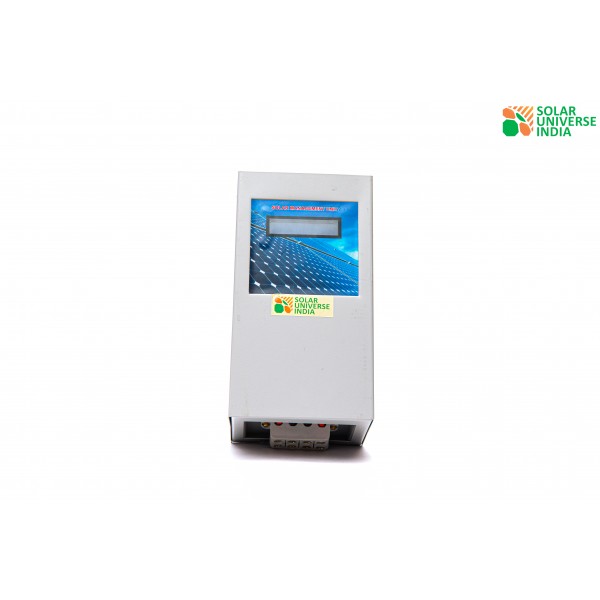
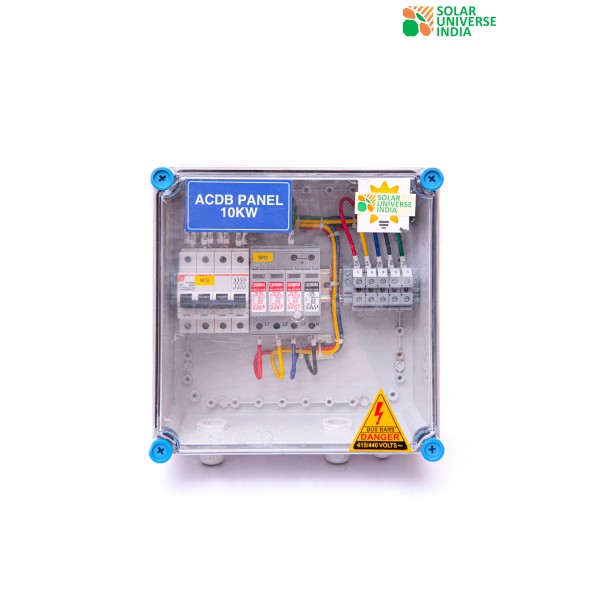
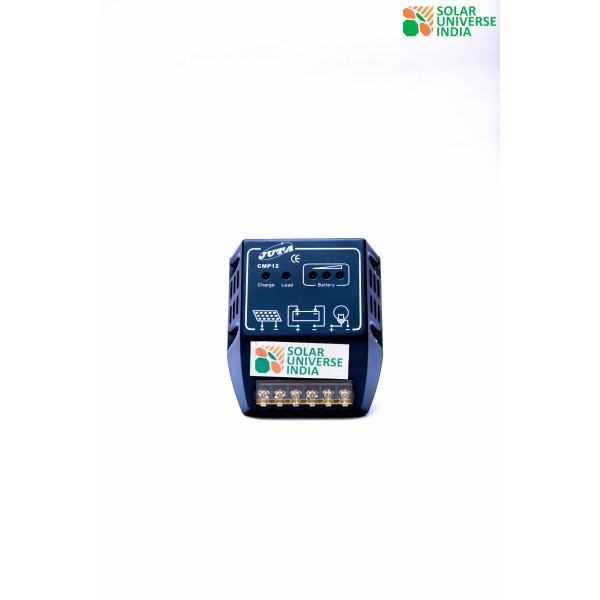
-600x600.jpg )
